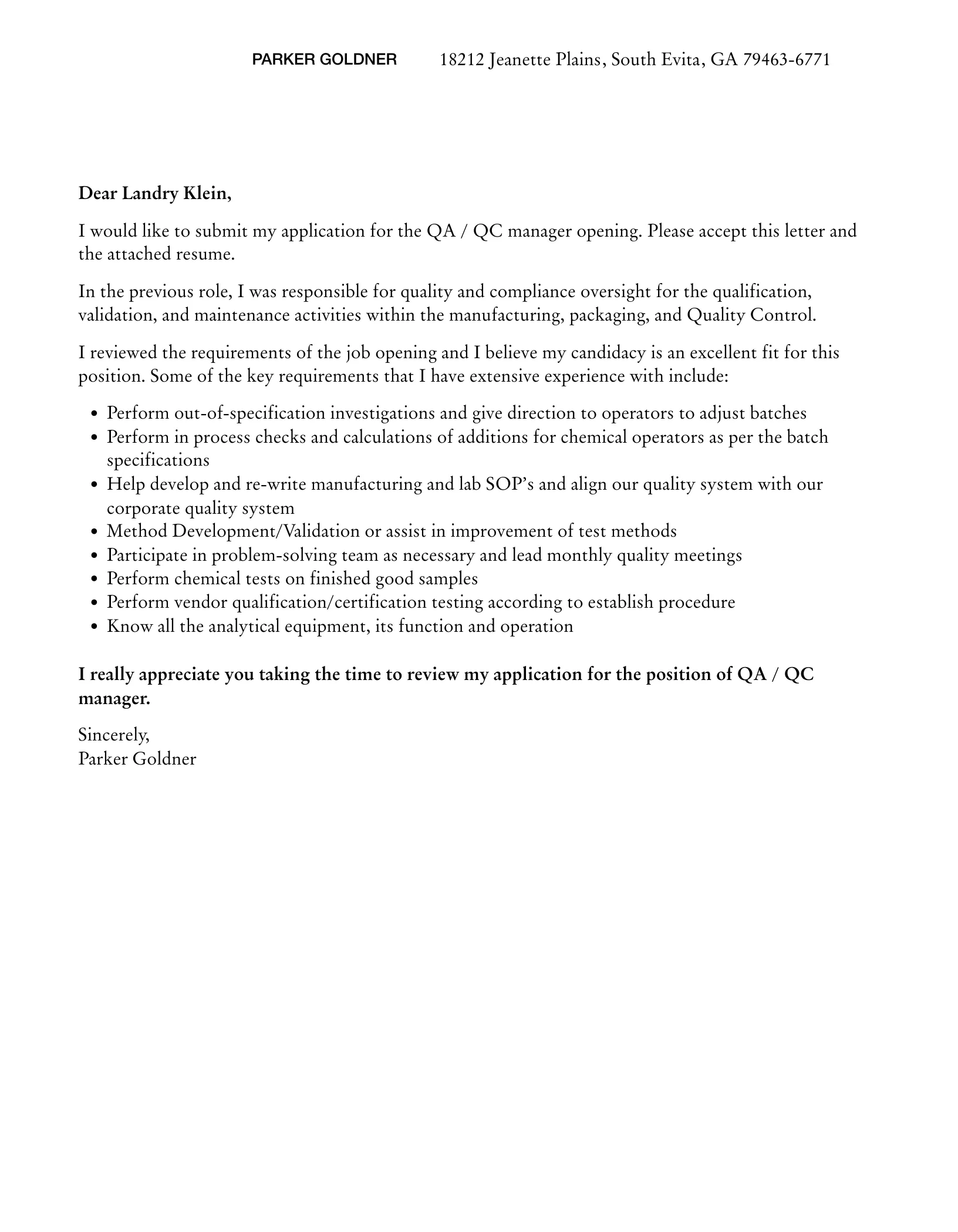QA Manager Cover Letter Secrets Revealed
Landing your dream QA Manager role starts with a standout cover letter. This crucial document is your first impression on potential employers, offering a glimpse into your skills, experience, and personality. A well-crafted cover letter doesn’t just list your qualifications, it tells a story, showcasing your value and demonstrating why you’re the perfect fit for the position. In this comprehensive guide, we’ll unveil the secrets to writing a QA Manager cover letter that grabs attention and secures you an interview. We’ll cover everything from crafting a compelling opening to highlighting your key skills and avoiding common pitfalls. Let’s dive into the essential elements of a winning cover letter and transform your job application into a success story.
Crafting a Compelling Opening
The opening of your cover letter is your opportunity to make a strong first impression. Start by addressing the hiring manager by name, if possible; this shows you’ve taken the time to research the company and the role. Immediately after the salutation, use the first paragraph to express your enthusiasm for the position and the company. Briefly mention where you saw the job posting and why the opportunity excites you. This sets the tone for the rest of the letter and immediately grabs the reader’s attention. This will help you separate yourself from the countless other candidates. Use a strong hook to grab the reader’s attention. Make it clear why you are an excellent candidate.
Highlighting Relevant Experience
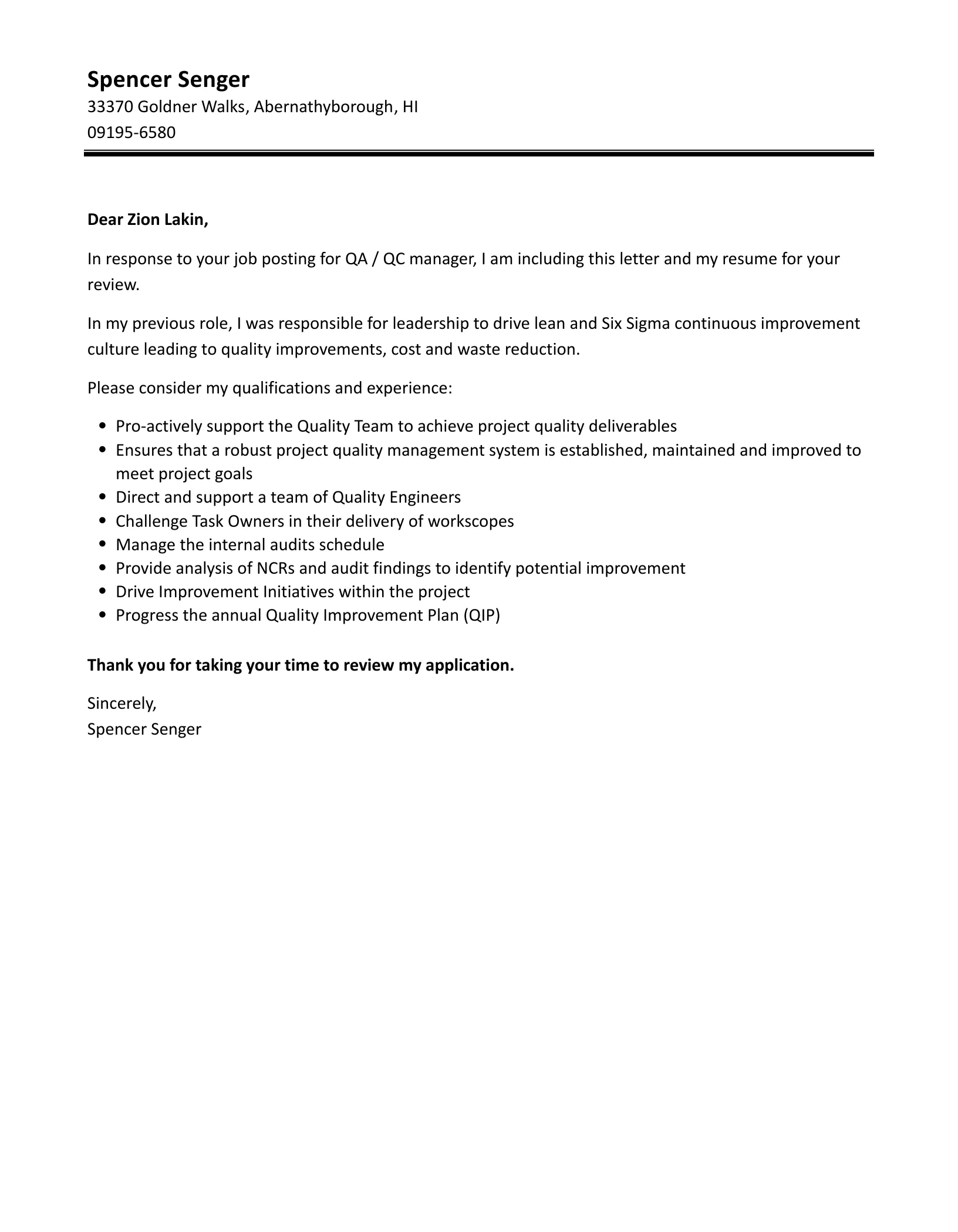
The body of your cover letter should delve into your relevant experience. Focus on the most pertinent aspects of your career that align with the job description. Instead of simply listing your past roles, provide specific examples of how you’ve excelled in previous QA Manager positions. Quantify your achievements whenever possible (more on that next), and tailor your examples to the specific requirements outlined in the job posting. Mention projects that showcase your skills and what you have achieved. It’s essential to demonstrate a clear understanding of the role’s responsibilities and how your past experiences have prepared you to meet those challenges.
Quantifying Achievements
Numbers speak louder than words. Whenever possible, quantify your achievements to provide concrete evidence of your impact. Instead of saying you “improved testing efficiency,” state that you “reduced testing time by 15%.” If you’ve led a team, specify how many members were on your team, and the results you achieved. Did your efforts lead to increased customer satisfaction, reduced bug reports, or improved product quality? Use metrics like these to demonstrate the tangible value you brought to your previous roles. This is your opportunity to shine, showing the impact that your work will have if you are selected for the position. It creates a much more persuasive narrative that will make the hiring manager take notice.
Showcasing Technical Skills
QA Managers need a diverse set of technical skills to be successful. List the technical skills you possess that align with the job requirements. This might include experience with specific testing methodologies (e.g., Agile, Waterfall), programming languages (e.g., Python, Java), automation tools (e.g., Selenium, JUnit), and defect tracking systems (e.g., Jira, Bugzilla). Be specific about your proficiency level with each skill. If the job description emphasizes certain technologies, be sure to highlight your experience with those. Don’t just list them; provide context, describing how you used these skills to achieve specific outcomes in previous roles. This is your chance to convince the hiring manager you can immediately step into the role and contribute effectively.
Demonstrating Leadership and Management Abilities
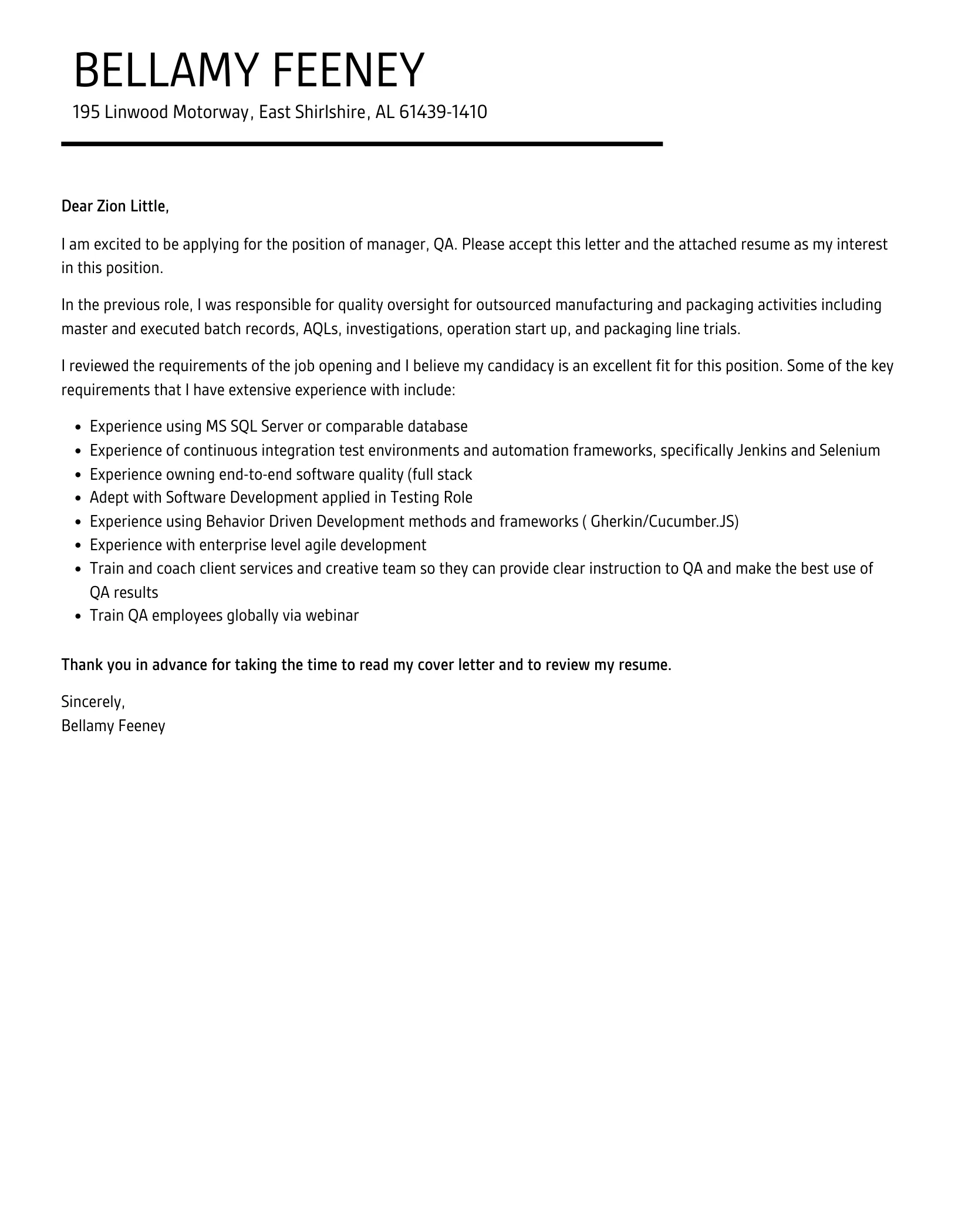
As a QA Manager, you’ll be leading a team, so your cover letter should showcase your leadership and management abilities. Provide examples of your experience in leading, motivating, and mentoring QA teams. Mention your experience with performance reviews, conflict resolution, and team building. Describe how you’ve fostered a positive and productive work environment. Detail any experience you have in project management, resource allocation, and budget management. The goal is to demonstrate that you have the skills to not only perform the technical aspects of the job but also to effectively manage and guide a team toward success. Focus on results, not just activities.
Tailoring Your Letter to the Job Description
A generic cover letter is a quick way to get your application tossed aside. Take the time to tailor each cover letter to the specific job description. Carefully read the job posting and identify the key skills and requirements the employer is seeking. Then, customize your cover letter to address those specific points. Use the same keywords and phrases from the job description to show that you understand the role and are qualified. This demonstrates that you’ve done your homework and are genuinely interested in the position. By tailoring your letter, you show that you are not just sending out mass applications but that you are genuinely interested in this role and this company.
The Importance of Proofreading
Before submitting your cover letter, proofread it meticulously. Typos, grammatical errors, and inconsistencies can undermine your credibility and create a negative impression. Read the letter multiple times, and consider asking a friend or colleague to review it as well. Ensure that the formatting is consistent and professional. Check for any inconsistencies in your contact information, and make sure your name and address are correct. A polished and error-free cover letter demonstrates your attention to detail and professionalism, increasing your chances of getting noticed by the hiring manager. A cover letter riddled with errors suggests you are not detail-oriented.
Key Skills to Include in Your Cover Letter
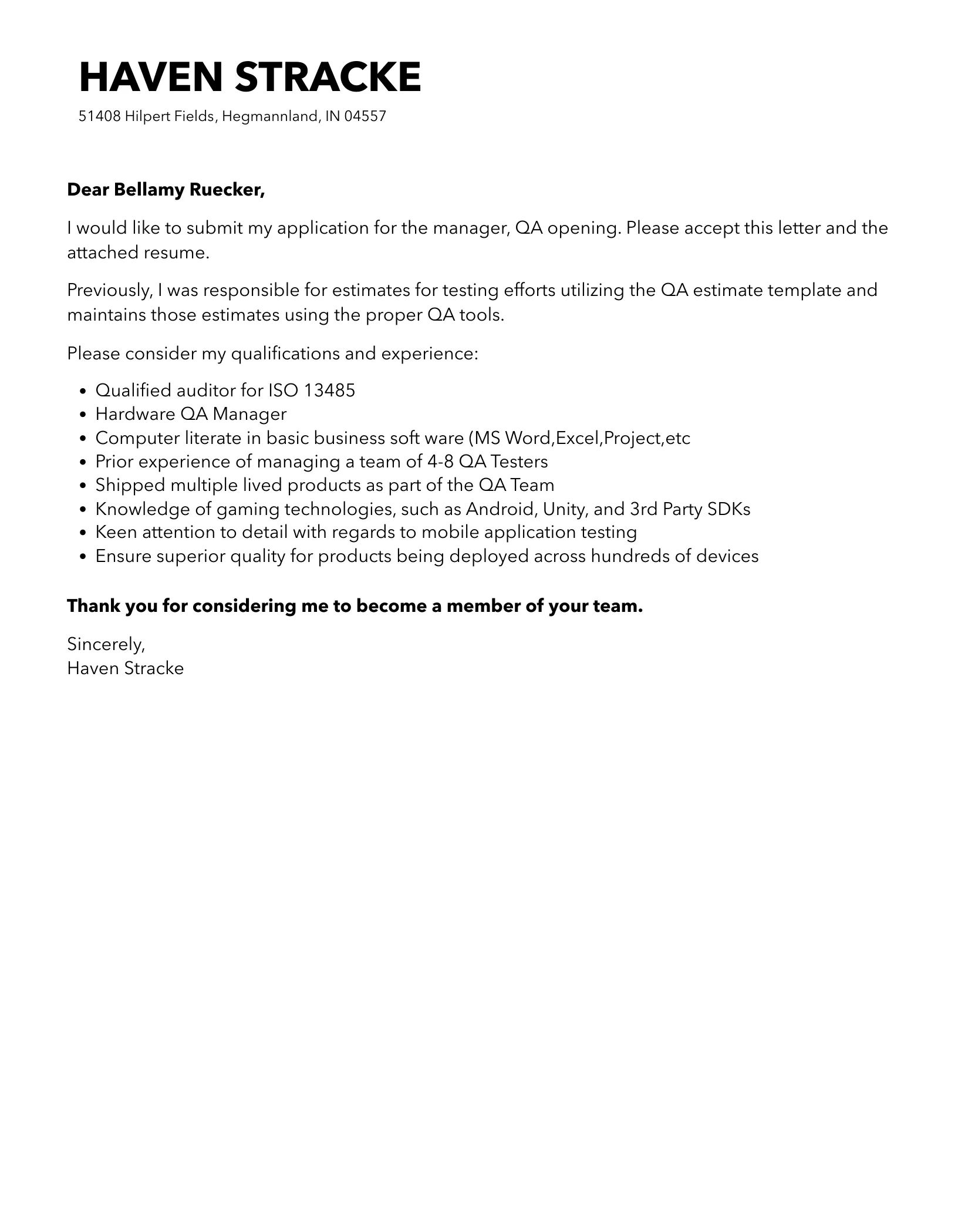
Communication Skills
Effective communication is crucial for a QA Manager. Highlight your ability to clearly and concisely communicate complex technical information to both technical and non-technical audiences. Provide examples of your experience with writing reports, presenting findings, and facilitating meetings. Mention your ability to actively listen, ask clarifying questions, and provide constructive feedback. The goal is to demonstrate that you can effectively communicate with your team, stakeholders, and other departments within the organization.
Problem-Solving Abilities
QA Managers need strong problem-solving skills. Showcase your ability to analyze problems, identify root causes, and implement effective solutions. Provide examples of how you’ve resolved technical issues, improved processes, or prevented defects. Demonstrate your ability to think critically, make sound judgments, and find creative solutions to complex challenges. Explain how you approach challenges and demonstrate your results. Show the hiring manager you can handle the inevitable challenges that come with the job and still get results.
Attention to Detail
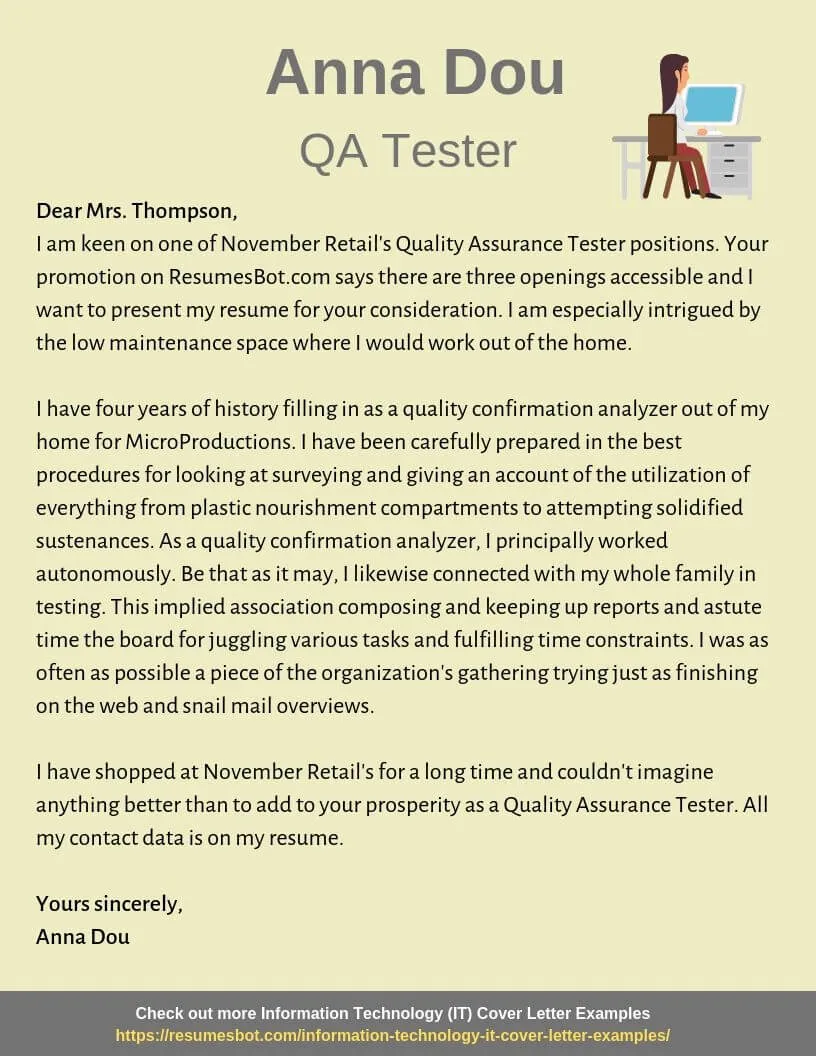
Attention to detail is a must-have for any QA professional. Emphasize your ability to meticulously review code, test cases, and documentation. Provide examples of how you’ve identified and resolved defects. Highlight your commitment to accuracy and thoroughness. Show that you’re committed to catching any issues before the product goes live. Show the hiring manager that you will ensure the product will be of high quality.
Leadership and Teamwork
Demonstrate your ability to lead and work effectively with a team. Provide examples of how you’ve motivated team members, fostered collaboration, and achieved common goals. Describe your experience in mentoring and training other QA professionals. Emphasize your ability to build and maintain positive working relationships. Highlight your experience in leading testing projects and coordinating with developers, product managers, and other stakeholders. Being a good team player is a must-have for a QA Manager.
Formatting and Presentation Best Practices
Choosing the Right Font and Font Size
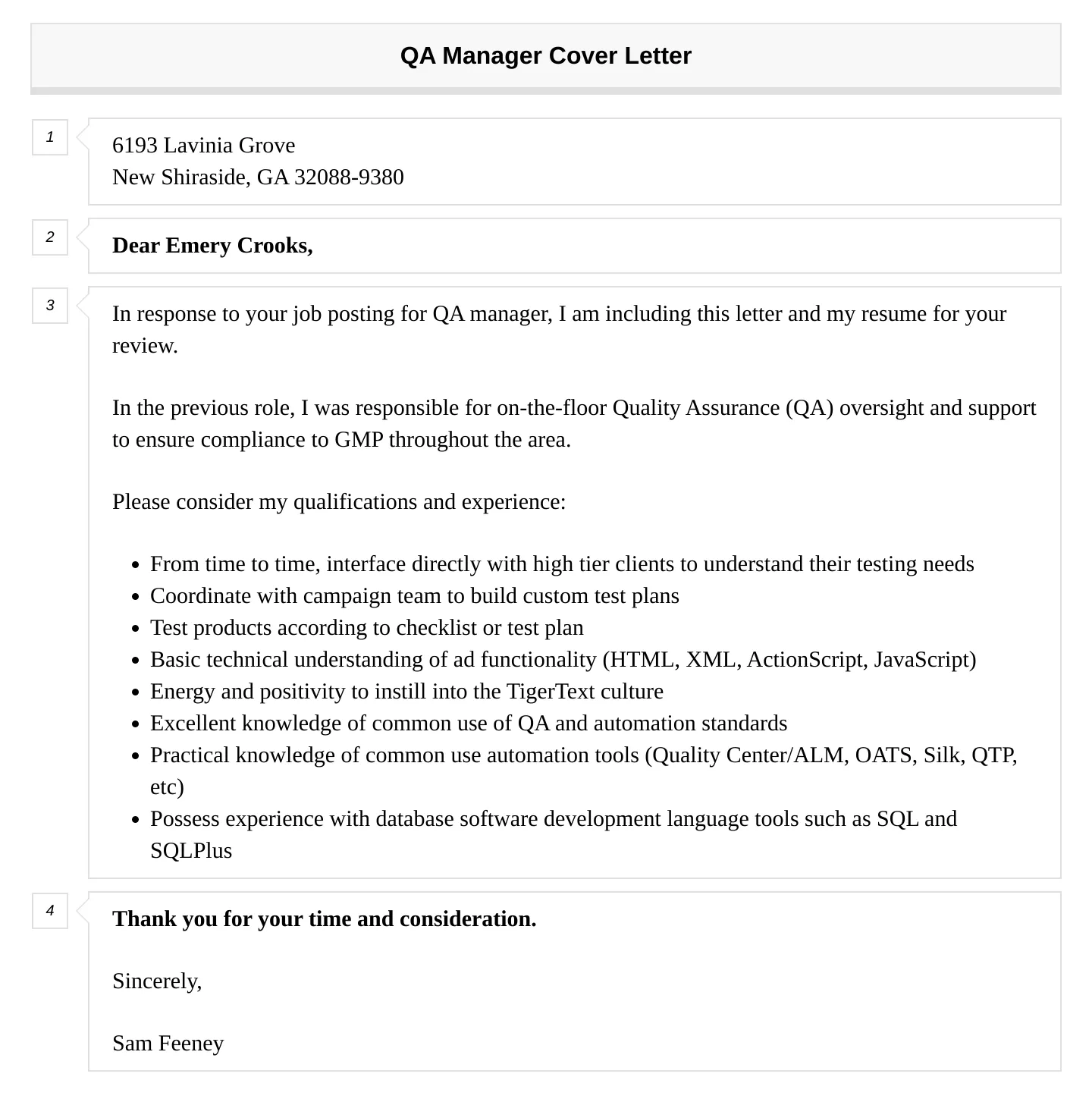
Select a professional and readable font, such as Arial, Times New Roman, or Calibri. Use a font size between 10 and 12 points for easy readability. Ensure that your font choice is consistent throughout the document. This simple step can greatly impact how a hiring manager perceives you. The best fonts are the ones that are most readable, and using a consistent font throughout the letter is a must. Avoid using fonts that are too fancy or difficult to read.
Proper Formatting and Structure
Format your cover letter using a professional structure. Use clear headings and subheadings to organize your content and make it easy to read. Use single spacing within paragraphs and double spacing between paragraphs. Use bullet points to highlight key achievements or skills. Maintain consistent margins throughout the document. The goal is to create a visually appealing and easy-to-scan document. Poor formatting is distracting, and can lead to the hiring manager rejecting your application. Make it easy for them to read and understand your key points.
Using Action Verbs
Start each bullet point or description with a strong action verb to convey your accomplishments and responsibilities. Examples of effective action verbs include managed, led, developed, implemented, improved, and achieved. Action verbs help to make your achievements more impactful and demonstrate your capabilities. They add energy to your writing and make your cover letter more compelling. Instead of ‘Responsible for testing’, use ‘Managed testing efforts’.
Common Mistakes to Avoid
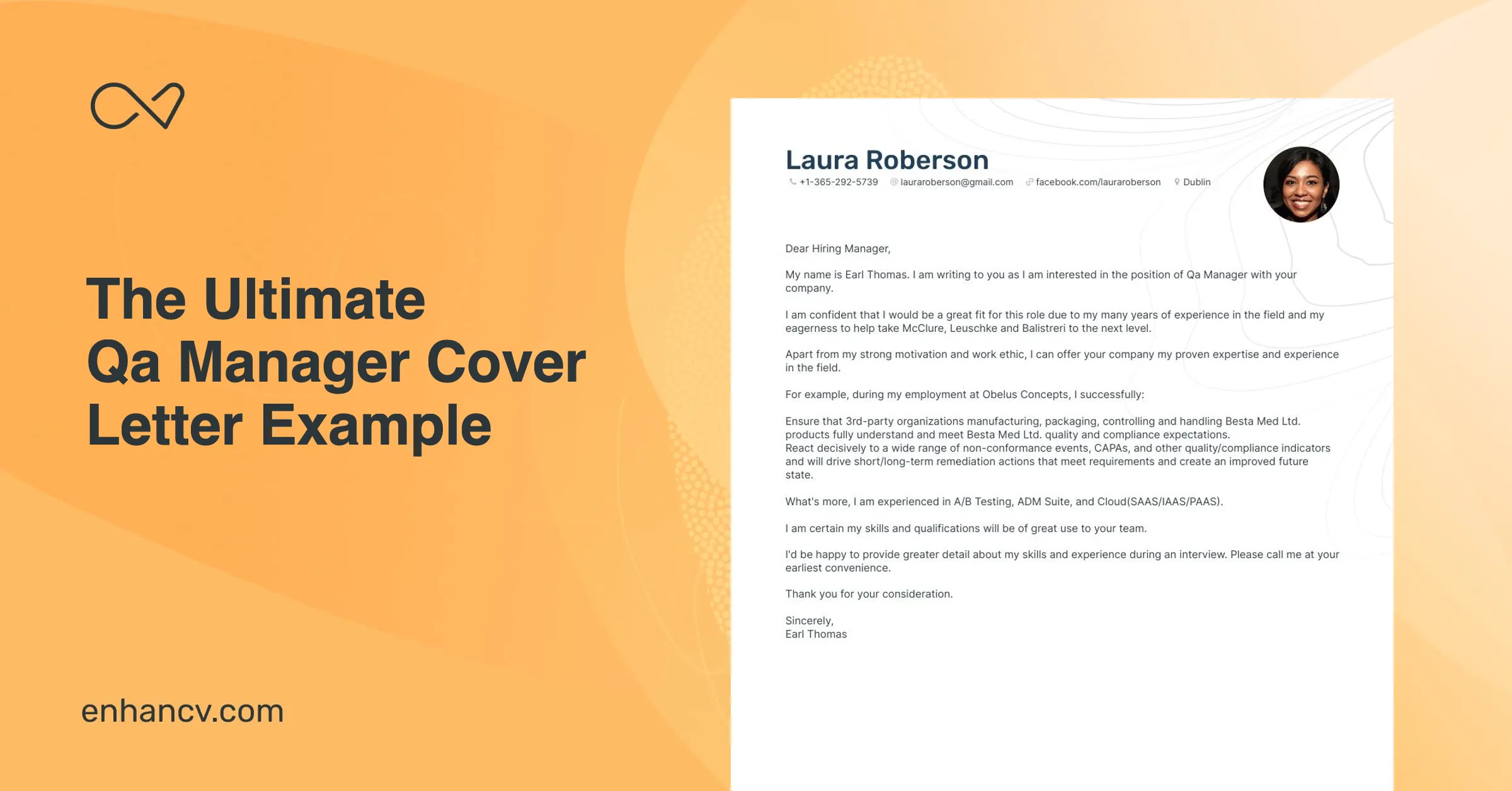
Generic Cover Letters
One of the biggest mistakes is sending out a generic cover letter that could be used for any job. As mentioned earlier, you need to tailor your cover letter to each specific job description. This shows the hiring manager that you’ve taken the time to understand the role and the company. It demonstrates that you are not just mass-applying for jobs but that you are genuinely interested in this opportunity. Always customize your letter for the specific role.
Typos and Grammatical Errors
Typos and grammatical errors are unacceptable and can create a negative impression. Proofread your cover letter carefully before submitting it. Ask a friend or colleague to review it. Use spell check and grammar check tools. A flawless cover letter demonstrates your attention to detail and professionalism. Errors suggest carelessness and a lack of commitment. Make sure your letter is perfect before submitting it. If you are not a strong writer, consider using a writing assistant to help you ensure there are no errors.
Failing to Tailor the Letter
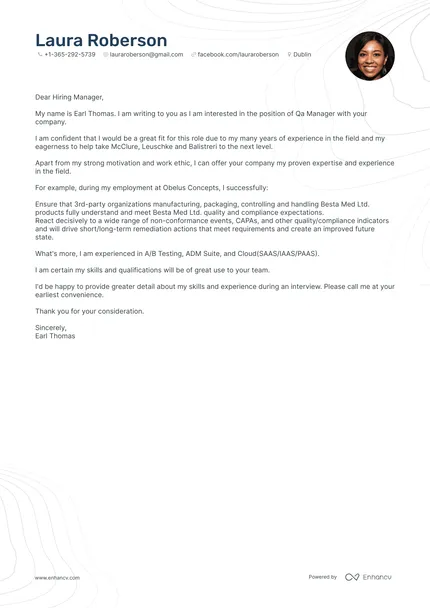
Failing to tailor your cover letter to the specific job description is a significant mistake. As mentioned earlier, you need to align your skills, experience, and achievements with the requirements outlined in the job posting. This shows the hiring manager that you are a good fit for the role. The cover letter should be customized and unique to the job. Use keywords from the job description, and address the specific requirements and how you can meet those needs. It shows that you are genuinely interested in the specific position and are not just sending out a generic application.
Closing with Confidence
Conclude your cover letter by reiterating your interest in the position and expressing your enthusiasm for the opportunity. Thank the hiring manager for their time and consideration. Include a call to action, such as stating that you are available for an interview and looking forward to hearing from them. Reiterate your contact information, and end with a professional closing, such as “Sincerely” or “Best regards.” A strong conclusion leaves a lasting positive impression and encourages the hiring manager to take the next step.
